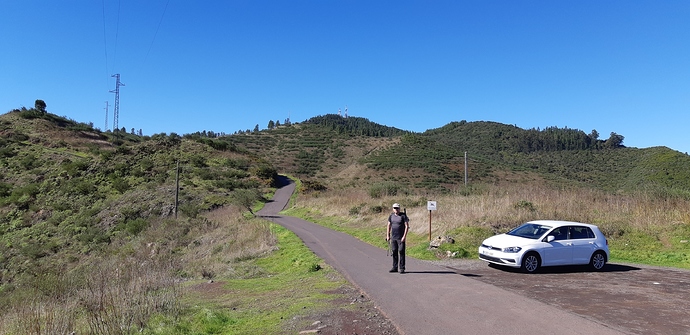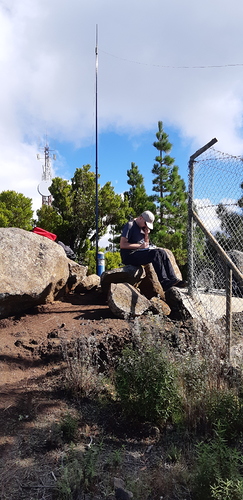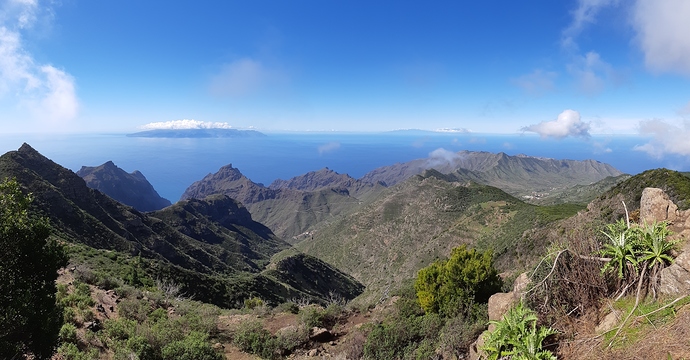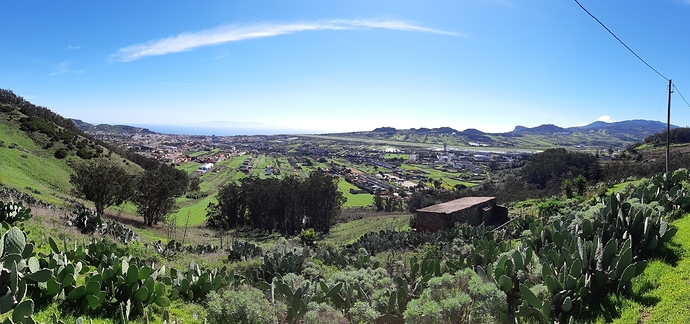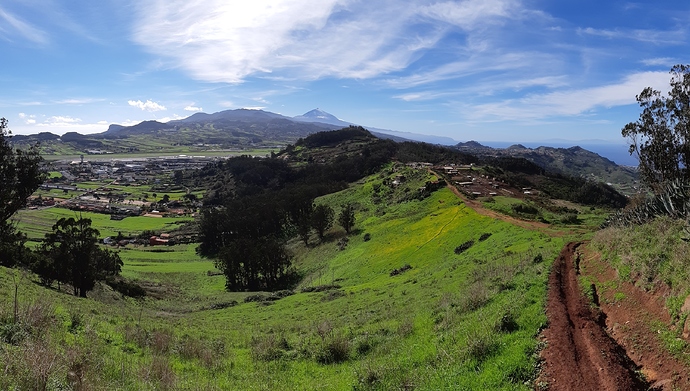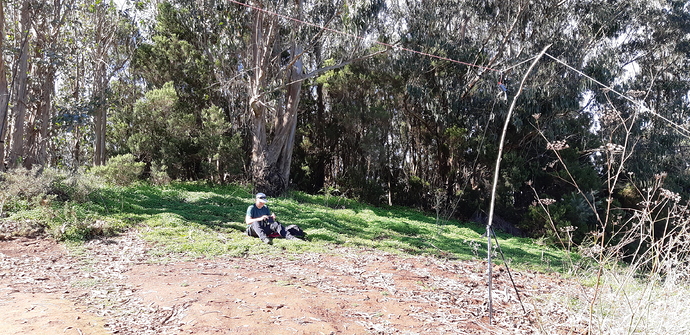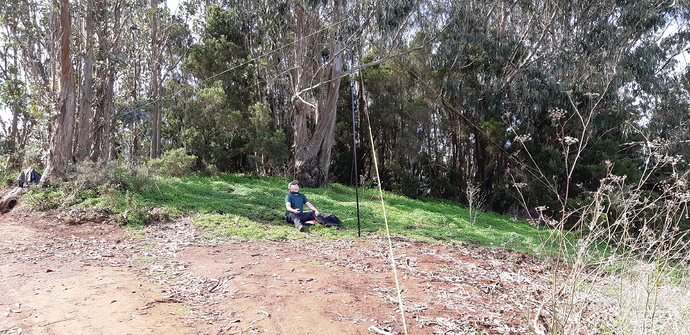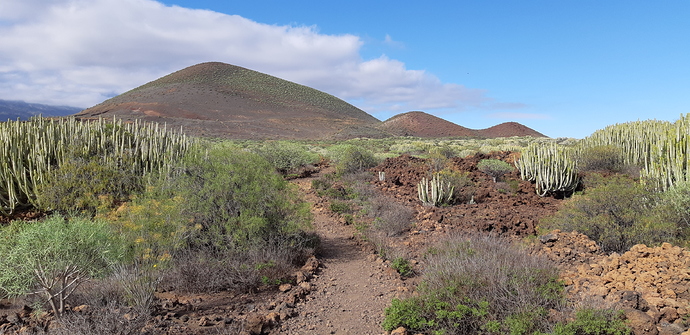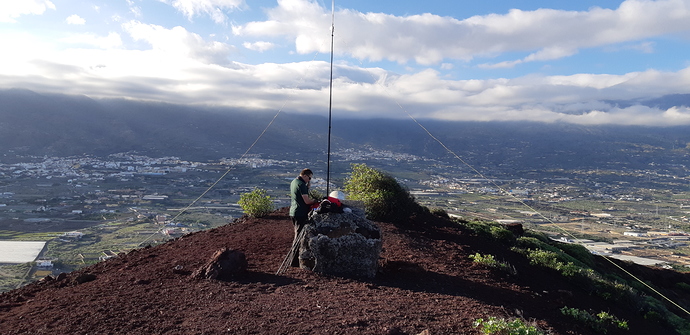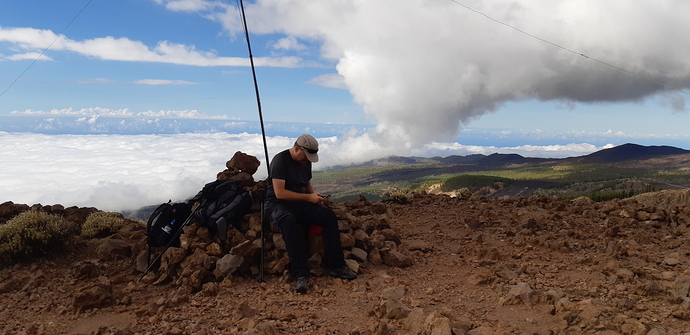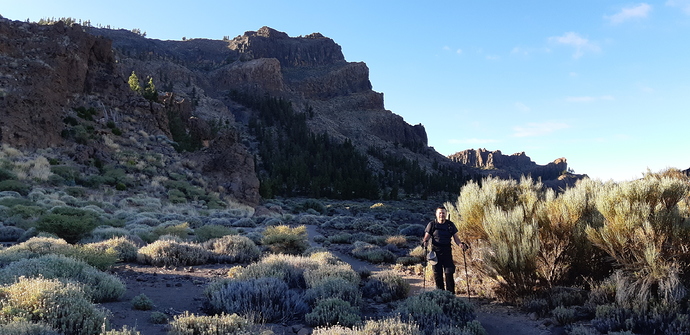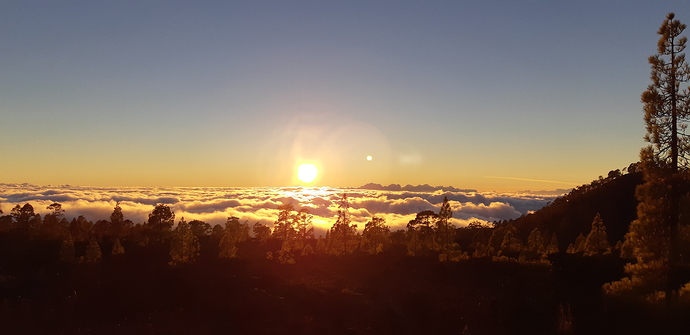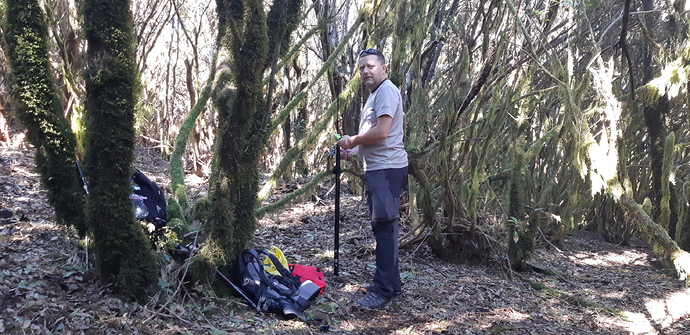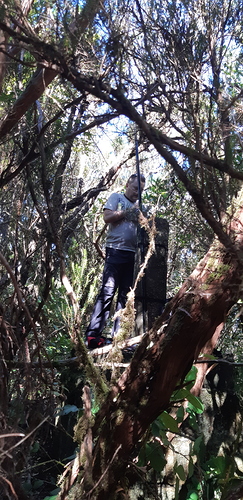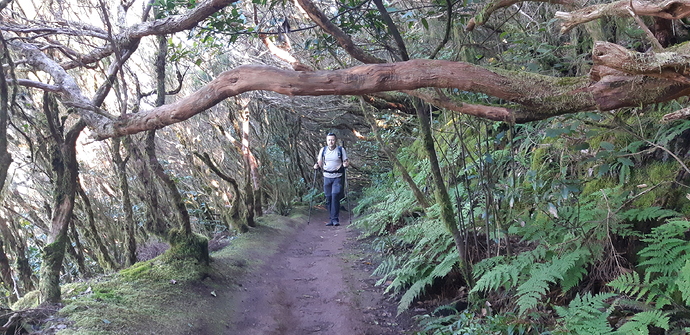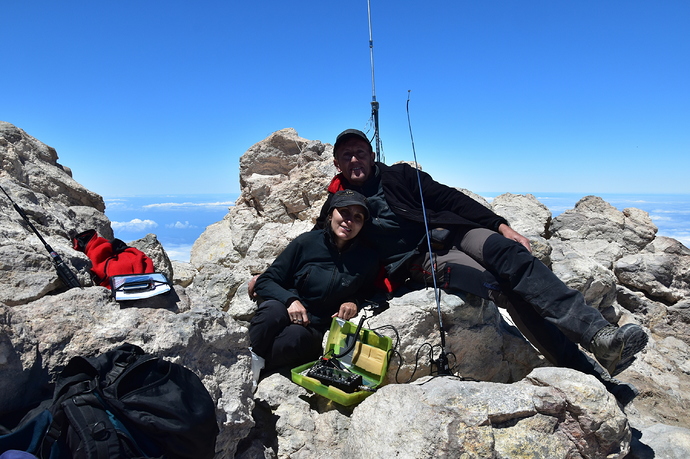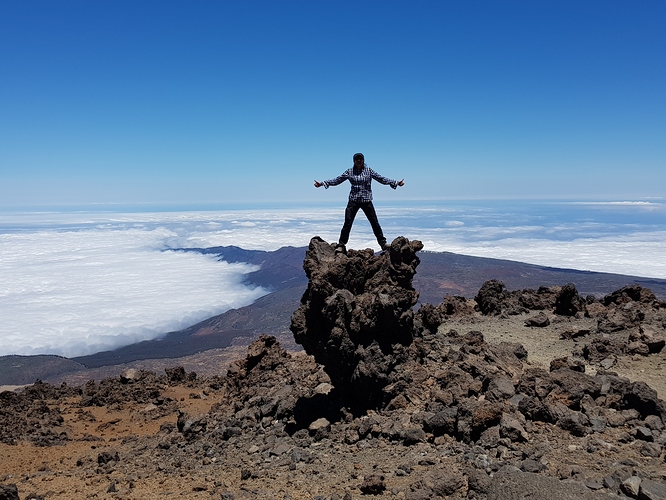My next activations were two not that difficult summits in Anaga mountains in the north. The clouds that covered this part of the island on previous days have cleared and we decided to hike around Roque de Taborno, looking for geocaches that were hidden since our last visit.
On the way there we made first stop at Cruz de Taborno (EA8/TF-008), worth 8 points. The summit is fenced off and occupied by Civil aviation authority, which has ATC radar station and radio navigation equipment there, and surrounded by dense Anaga forest. The site looked unoccupied, but under heavy surveillance. I didn’t notice any QRM from the transmitters. Short paved road leads from the closest road junction up to the gates of CAA site. There is enough space and I thought about setting my station there, just in front of the gates, but decided against it as the summit with its huge radar dome obstructed the view to the north. We tried to find the way around the CAA site to the north side, but gave up because of the dense vegetation, that is so typical for the Anaga mountains. We went back to the main road and drove a few hundred meters to the spot where official hiking trail crosses the main road. There are only a few parking possibilities along the main road and we were lucky to get one for our car. We took the path leading around the CAA site along its fence. It’s only a short hike and as soon the trail starts to descend, you get out of the AZ. I tried to find a suitable spot to extend the antenna support fully and be able to extend the dipole wires in the right direction towards EU but couldn’t find one as the trees there are short and quite dense. Eventually I settled for a place just off the trail. I could extend the pole for a few meters and stretch the dipole wires without touching the plants. This way the antenna was under the tree canopy but at least had unobscured view to the north. This was the only summit where we had problem with cell phone coverage. I had to walk along the CAA site fence where it is the lowest, hold my phone up in the air to get the signal good enough and send the spot. I made a few QSOs on 14MHz. Good enough.
Dense vegetation with low canopy. Very little space for the dipole antenna. Vertical may be easier to set up.
My next activation was Pico de los Pasos (EA8/TF-011), a six-pointer. We drove from previous activation to the parking at small Casa forestal, where one of official hiking trails, that crisscross the Anaga mountains, begins. The trail leads through typical Anaga forest, which covers the entire area, along the southern slope of the Pico de los Pasos and never opens to the north, at least in and near AZ. At the highest point relative to the summit we left the trail and turned uphill. This time we didn’t climb stones and rocks, but over and around short, dense and twisted tree trunks and tried to avoid what looked like blackberry stems, equiped with sharp and catchy thorns. After good ten minutes of bushwhacking we reached the summit marker.
The vegetation around the marker was so dense (thorns!) that there was really no option to extend the dipole. With our hiking poles we pushed away the blackberry stems that covered the summit marker and I climbed up. I attached the end of one leg of 14MHz dipole to the tip of my fishing pole/antenna support and extended it verticaly through dense tree canopy. I threw the other dipole leg roughly into the direction of EU hoping that it doesn’t get stuck in the bushes. I hoped that this way I created some sort of vertical antenna, which may be inefficient but good enough to get me some QSOs. As squatting on the summit marker was quite uncomfortable, I didn’t stay there much longer than necessary after the initial pileup ended. On our way back we again made a short detour to look for a few geocaches.
Not much space up there. Vertical is the only option.
Typical Anaga forest. Great for hiking in the summer and magical in the autumn mist, but just don’try to leave the trail!
This was last of my six activations on this trip to Tenerife. Although already geocaching makes us “to boldly go where not many tourists have gone before”, SOTA provided another reason to veer off the beaten track, in one case quite literally. Thanks to all the chasers for the contact and especially my XYL for company, support and help!
